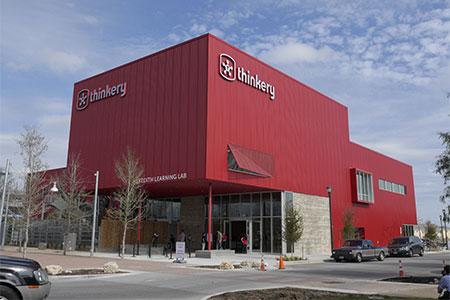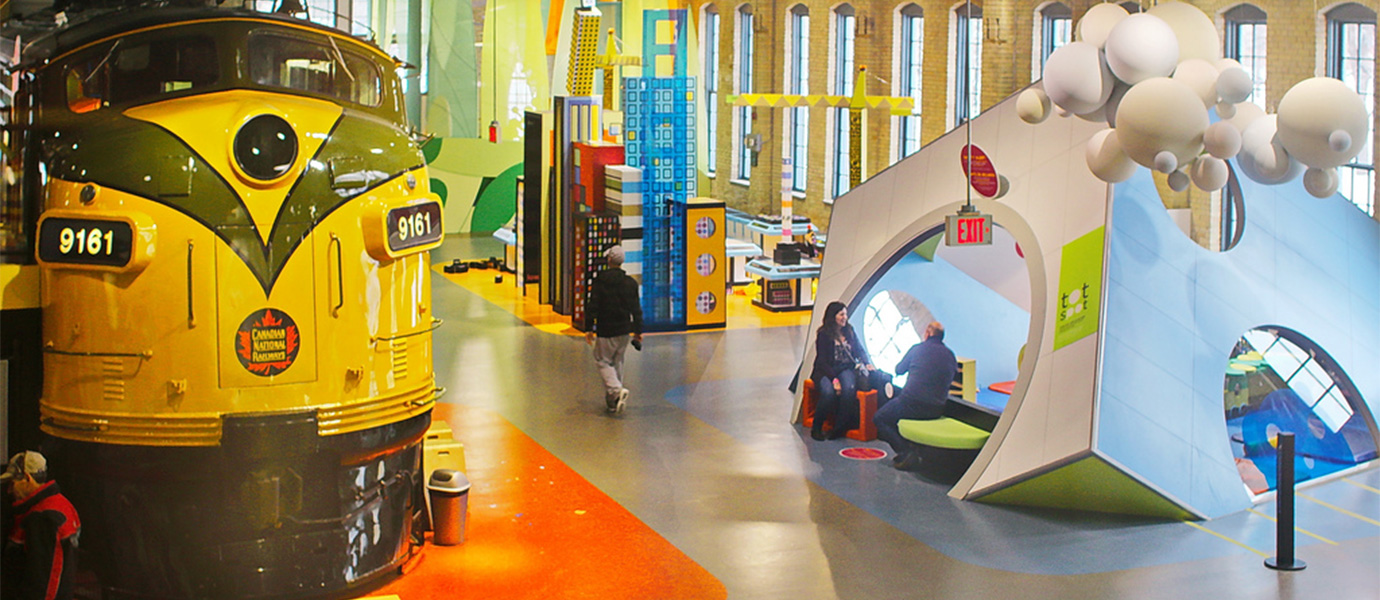
School
School groups can come for a guided tour around the museum, and 4th- and 5th-graders can have a hands-on program in the Maker Lab, where they will create a paper circuit card.
supports classroom learning in:
Art, STEM
topics covered:
art, construction, crafts, electricity, physics
contact info
Name: School Programs
Phone: 512-469-6228
Email: [email protected]
INFO
ABOUT
The Thinkery
The Thinkery is the premier place for children to ask “why” and “how” – and find answers! Exhibit galleries teach children about STEM concepts, while also engaging their imaginations through creative play. For example, the Innovators’ Workshop blends art and science with projects like painting on glass, and working with simple machines. The Spark Shop lets children explore aerodynamics, and have fun building and launching gliders. Children can manipulate color, light, and shadows in the Light Lab; explore fluid dynamics in Currents; and learn old and new crafts in the Space 8 maker lab; among others.
contact info
Hrs: Tues.-Fri. 10AM-5PM, Weekends 10AM-6PM.
HELPFUL LESSON PLAN(S)
Prepared by FieldTripDirectory.com
Children’s Museum Lesson Plan
Children’s museums feature interactive exhibits that are designed to be manipulated by children.
The first children’s museum in the world was the Brooklyn Children’s Museum, founded in 1899. Hundreds of children’s museums have opened in the United States since then. As of 2007, the Association of Children’s Museums estimated that there were approximately 80 children’s museums in development alone.
View Lesson Plan>>
Scouts
Scout groups can come for a guided tour around the museum, during which they’ll explore several exhibit galleries and rotate through activities. Scouts are also invited to attend monthly Think Lab programs - these programs are an opportunity for scouts to practice their creativity and work with unique art materials, electronics, and technology.
supports scout badges in:
Art, Science
topics covered:
art, crafts, electricity, physics, problem solving, water
contact info
Phone: 512-469-6228
INFO
ABOUT
The Thinkery
The Thinkery is the premier place for children to ask “why” and “how” – and find answers! Exhibit galleries teach children about STEM concepts, while also engaging their imaginations through creative play. For example, the Innovators’ Workshop blends art and science with projects like painting on glass, and working with simple machines. The Spark Shop lets children explore aerodynamics, and have fun building and launching gliders. Children can manipulate color, light, and shadows in the Light Lab; explore fluid dynamics in Currents; and learn old and new crafts in the Space 8 maker lab; among others.
contact info
Hrs: Tues.-Fri. 10AM-5PM, Weekends 10AM-6PM.
HELPFUL LESSON PLAN(S)
Prepared by FieldTripDirectory.com
Children’s Museum Lesson Plan
Children’s museums feature interactive exhibits that are designed to be manipulated by children.
The first children’s museum in the world was the Brooklyn Children’s Museum, founded in 1899. Hundreds of children’s museums have opened in the United States since then. As of 2007, the Association of Children’s Museums estimated that there were approximately 80 children’s museums in development alone.
View Lesson Plan>>
Camp
Campers can have a guided, hands-on tour of four exhibit galleries. They can invent in the Innovators' Workshop; have fun designing gliders in the Spark Shop; play with water and sound in Currents; and manipulate color, light, and shadows in the Light Lab.
topics covered:
art, crafts, electricity, physics, problem solving, water
contact info
Name: School Programs
Phone: 512-469-6228
Email: [email protected]
INFO
ABOUT
The Thinkery
The Thinkery is the premier place for children to ask “why” and “how” – and find answers! Exhibit galleries teach children about STEM concepts, while also engaging their imaginations through creative play. For example, the Innovators’ Workshop blends art and science with projects like painting on glass, and working with simple machines. The Spark Shop lets children explore aerodynamics, and have fun building and launching gliders. Children can manipulate color, light, and shadows in the Light Lab; explore fluid dynamics in Currents; and learn old and new crafts in the Space 8 maker lab; among others.
contact info
Hrs: Tues.-Fri. 10AM-5PM, Weekends 10AM-6PM.
HELPFUL LESSON PLAN(S)
Prepared by FieldTripDirectory.com
Children’s Museum Lesson Plan
Children’s museums feature interactive exhibits that are designed to be manipulated by children.
The first children’s museum in the world was the Brooklyn Children’s Museum, founded in 1899. Hundreds of children’s museums have opened in the United States since then. As of 2007, the Association of Children’s Museums estimated that there were approximately 80 children’s museums in development alone.
View Lesson Plan>>
Homeschool
Homeschool groups can come for a guided tour around the museum, during which they’ll explore several exhibit galleries and rotate through activities. Smaller groups can attend one of the Thinkery’s weekly camp programs, during which they can learn in a group setting with a Thinkery educator.
supports classroom learning in:
Art, STEM
topics covered:
art, construction, crafts, electricity, physics
contact info
Phone: 512-469-6228
INFO
ABOUT
The Thinkery
The Thinkery is the premier place for children to ask “why” and “how” – and find answers! Exhibit galleries teach children about STEM concepts, while also engaging their imaginations through creative play. For example, the Innovators’ Workshop blends art and science with projects like painting on glass, and working with simple machines. The Spark Shop lets children explore aerodynamics, and have fun building and launching gliders. Children can manipulate color, light, and shadows in the Light Lab; explore fluid dynamics in Currents; and learn old and new crafts in the Space 8 maker lab; among others.
contact info
Hrs: Tues.-Fri. 10AM-5PM, Weekends 10AM-6PM.
HELPFUL LESSON PLAN(S)
Prepared by FieldTripDirectory.com
Children’s Museum Lesson Plan
Children’s museums feature interactive exhibits that are designed to be manipulated by children.
The first children’s museum in the world was the Brooklyn Children’s Museum, founded in 1899. Hundreds of children’s museums have opened in the United States since then. As of 2007, the Association of Children’s Museums estimated that there were approximately 80 children’s museums in development alone.
View Lesson Plan>>
